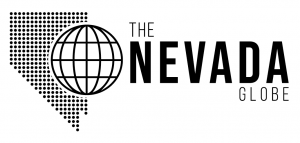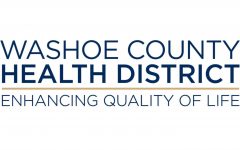
Healthcare costs (Photo: Flickr)
Decoding Health Dollars: Understanding the Investment in Employees’ Well-being
As the healthcare reform debate intensifies, understanding the intricacies of health insurance funding is becoming more crucial
By Aaron Bren, November 20, 2023 9:02 am
The financial structure of healthcare insurance is a complex and often hidden framework, crucial yet mostly invisible to those it serves. At its heart lies a critical decision made by employers that shapes the journey of every insurance transaction, even for something as simple as a flu shot. This pivotal choice is between offering a self-funded plan, where employers directly shoulder healthcare costs, or opting for a fully insured plan, entrusting an insurance company with the responsibility. Each choice sets off a chain of financial operations, underscoring the intricate and weighty nature of healthcare financing in America.
Fully-Insured Plans: A Traditional Approach
Most employers opt for fully-insured plans in the healthcare coverage sector, akin to a turnkey solution. In this model, employers pay fixed premiums to insurance companies, which manage all health claims. This arrangement is similar to leasing a car, where the leasing company manages maintenance. The premiums cover claims and encompass the insurer’s administrative costs, state taxes and contribute to their profits. Notably, fully-insured plans may face higher premiums if these expenses increase.
These plans usually offer standard benefit packages, providing a straightforward and less complicated benefits provision method. However, this simplicity comes at the cost of limited customization, making it an ideal option for businesses seeking predictability and ease in their healthcare offerings.
Self-Funding: A Strategic Alternative
Shifting trends in health insurance see more employers choosing self-funding. Governed by the Employee Retirement Income Security Act of 1974 (ERISA), this approach involves employers directly setting aside funds for employee health claims, including those yet to be reported. ERISA is a key federal law that ensures these health plans meet certain standards, safeguarding the interests of employees. Self-funding offers the flexibility to customize health plans to meet specific employee needs, akin to personalizing a car.
This method gives employers the leeway to tailor health benefits more closely to their workforce’s requirements, unlike the more generic options of fully insured plans. However, this adaptability demands proficient risk and cost management from employers.
Risk Dynamics in Healthcare Financing
Navigating the risk dynamics in healthcare financing involves understanding the stark differences between fully-insured and self-funded plans. Fully-insured plans offer employers a sense of stability through fixed premiums, albeit often at a higher cost. This model simplifies budgeting, as the insurance company assumes the fluctuating expenses of healthcare claims. It’s a trade-off between higher, yet predictable, costs and financial certainty.
Conversely, self-funding can be more cost-efficient but introduces a level of financial unpredictability. Employers in this model take on the risk themselves, which they often balance with stop-loss insurance and astute financial management and risk assessment. This insurance acts as a safeguard, protecting the company from the financial strain of unexpected, high-cost health claims.
The financial appeal of self-funded plans is particularly evident in varying interest rate environments. In periods of higher interest rates, the opportunity for employers to invest claim funds and potentially earn higher returns makes self-funding more attractive. This investment can offset healthcare costs, adding to the model’s financial benefits. However, the low interest rates of recent years have reduced these potential gains, underscoring the sensitivity of self-funded plans to broader economic factors. Employers who ‘float’ their claims dollars — temporarily holding them before paying out claims — are subject to these financial currents, making astute management essential in a self-funded approach.
The ACA’s Impact
The Affordable Care Act (ACA) distinctly influences fully-insured health plans more than self-funded ones. Regulations introduced by the ACA often increase premiums for fully-insured plans as insurance companies seek to offset their higher compliance costs. A key aspect of the ACA is the Minimum Medical Loss Ratio (MLR), which requires a certain portion of premiums to be allocated to claims and healthcare improvements, with the specific percentage depending on the size of the group covered.
In contrast, while enjoying greater freedom from state mandates and premium taxes, self-funded plans are not entirely exempt from the ACA’s reach. These plans are subject to certain ACA-specific fees, such as those contributing to the reinsurance pool and the Patient-Centered Outcomes Research Institute (PCORI), reflecting a nuanced impact of healthcare legislation across different insurance models.
At Healthcare’s Intersection: Understanding and Choice
As the healthcare reform debate intensifies, understanding the intricacies of health insurance funding is becoming more crucial. This understanding, akin to knowing the difference between buying and leasing a car, is vital for meaningful participation in policy discussions and evaluating employer-provided benefits.
Voting decisions on healthcare are often made without fully grasping the proposed system’s complexities, which can inadvertently complicate employer-managed health plans with a track record of providing effective benefits. These unintended consequences can disrupt the delicate balance of cost and coverage that many employers have successfully maintained. Such disruptions can affect the financial stability of these plans and the quality and accessibility of healthcare for countless employees.
In the complex world of healthcare finance, employers’ decisions between fully-insured and self-funded plans are pivotal. These choices significantly impact the structure and efficacy of employee health coverage in the U.S., highlighting the need for informed and strategic decision-making in healthcare planning.




